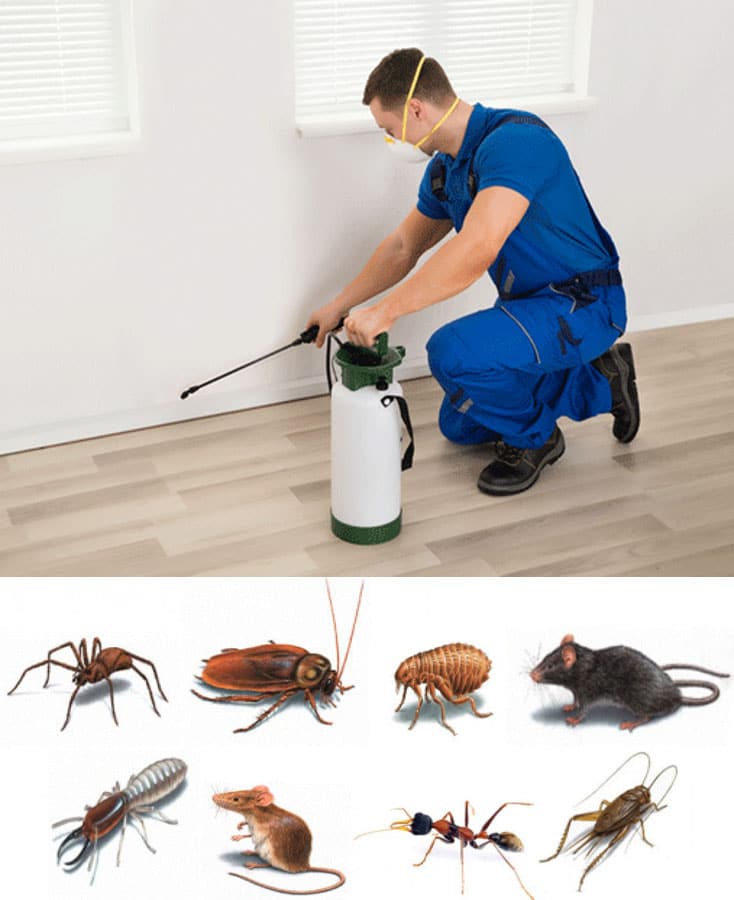Relied On A1 Exterminator Charlotte NC - Comprehensive Pest Solutions
Bed Pest Treatment Breakdown: Comparing Chemical Vs. Non-Chemical Solutions
In the world of insect control, specifically when taking care of the relentless issue of bed insects, the selection between chemical and non-chemical treatment solutions can be a pivotal one. Both techniques use unique advantages and drawbacks, influencing aspects such as efficiency, safety and security considerations, and general price. By taking a look at the nuanced information of each approach, a more clear understanding of which course to go after in resolving a bed bug invasion can be acquired.
Performance of Chemical Treatments
Chemical treatments for bed insect infestations have actually been widely acknowledged for their fast and powerful efficacy in eradicating these parasites. When thinking about the effectiveness of chemical treatments, it is vital to recognize that they can provide a detailed and quick service to a bed pest issue. Professional pest control operators typically rely upon pesticides to target bed bugs at various stages of their life cycle, consisting of adults, nymphs, and eggs. These chemicals normally function by interfering with the bed pests' nerve system, resulting in paralysis and eventual fatality.
Moreover, chemical treatments have the advantage of providing recurring effects, meaning that they can remain to get rid of bed bugs also after the first application. This recurring action is specifically beneficial in combating any kind of prospective re-infestations. Additionally, the quick action of chemical treatments can bring relief to people dealing with extreme bed insect problems, enabling them to reclaim control of their home rapidly.
Security Concerns With Chemical Solutions
One essential aspect that requires mindful consideration when utilizing chemical solutions for bed bug therapy is making sure the safety and security of residents and the atmosphere. Exposure to specific chemicals utilized in bed pest treatments can lead to respiratory system issues, skin inflammation, or other adverse reactions, particularly in individuals with pre-existing conditions or sensitivities.
Additionally, the environmental impact of chemical solutions is an additional significant factor to consider. Some pesticides used in bed pest therapies may be hazardous to useful pests, wildlife, and ecosystems if they seep right into the dirt or water systems. It is necessary to use chemical therapies carefully, following safety and security standards, and thinking about much less poisonous choices to alleviate these threats and guarantee the reliable and secure administration of bed bug problems.
Benefits of Non-Chemical Strategies
Thinking about the possible safety and security concerns and ecological effect related to chemical solutions for bed pest therapy, checking out non-chemical techniques offers a promising choice with a number of unique benefits. Non-chemical approaches supply a more secure option for families, especially those with youngsters, pet dogs, or individuals conscious rough chemicals. These strategies get rid of the risks of exposure to hazardous substances, reducing the possibility for negative wellness impacts. In addition, non-chemical therapies are ecologically friendly, as new home pest inspection they do not add to air or water pollution, making them a sustainable option for insect control.
In addition, non-chemical solutions can be reliable in targeting bed insects, including hard-to-reach locations where chemical treatments may not pass through - A1 bed bug treatment in charlotte. Approaches such as warmth therapy, vacuuming, heavy steam cleaning, and mattress coverings provide complete elimination without the use of unsafe chemicals.
Limitations of Non-Chemical Treatments

Furthermore, non-chemical therapies often call for numerous applications to attain successful elimination. This can be taxing and might not constantly ensure complete elimination of all bed pests and their eggs, particularly in hard-to-reach or surprise locations.
In addition, the success of non-chemical treatments heavily depends pest supplies online on appropriate application and thoroughness, which can be testing for individuals without professional knowledge. Insufficient application of non-chemical approaches might lead to insufficient obliteration, resulting in persistent invasions and the need for additional therapies.
As a result, while non-chemical therapies have their advantages, it is essential to recognize these limitations and consider them when determining one of the most effective method for managing bed bug invasions.
Cost Contrast: Chemical Vs. Non-Chemical Options
Offered the restrictions linked with non-chemical treatments, a crucial aspect to examine in the context of bed bug management is the price contrast in between chemical and non-chemical choices. In comparison, non-chemical treatments like heat treatment or steam can be more pricey, with costs varying from $1,000 to $6,000 for an entire home. While the preliminary price of chemical treatments might seem lower, multiple treatments may be called for to completely get rid of the invasion, possibly increasing the total expense.
Conclusion

Thinking about the prospective security concerns and ecological impact connected with chemical options for bed bug therapy, exploring non-chemical strategies presents a promising option with a number of distinct advantages.Offered the restrictions linked with non-chemical treatments, an essential element to evaluate in the context of bed bug monitoring is the price contrast between chemical and non-chemical options. In contrast, non-chemical therapies like heat treatment or vapor can be much more expensive, with expenses varying from $1,000 to $6,000 for a whole home. While the initial price of chemical treatments might appear lower, multiple treatments might be required to fully eradicate the invasion, possibly raising the total price.In verdict, when comparing chemical and non-chemical bed insect treatment alternatives, it is necessary to consider performance, security, benefits, restrictions, and expense.